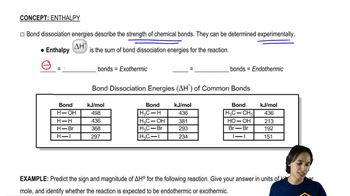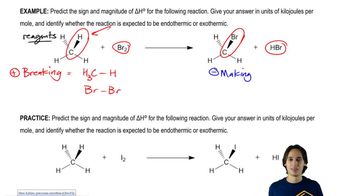a. Using bond-dissociation enthalpies from Table 4-2. (page 167), calculate the heat of reaction for each step in the free-radical bromination of methane
b. Calculate the overall heat of the reaction.
 Verified step by step guidance
Verified step by step guidance Verified video answer for a similar problem:
Verified video answer for a similar problem:



 4:09m
4:09mMaster How to calculate enthalpy using bond dissociation energies. with a bite sized video explanation from Johnny
Start learning